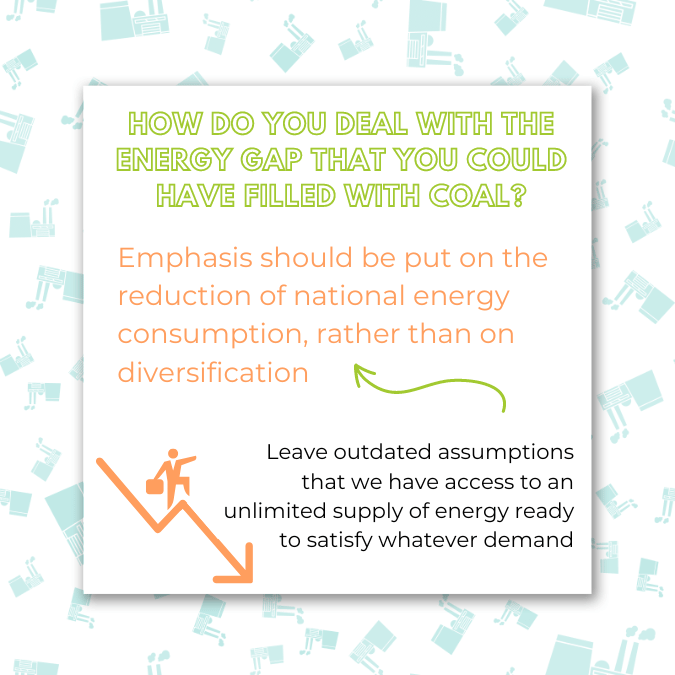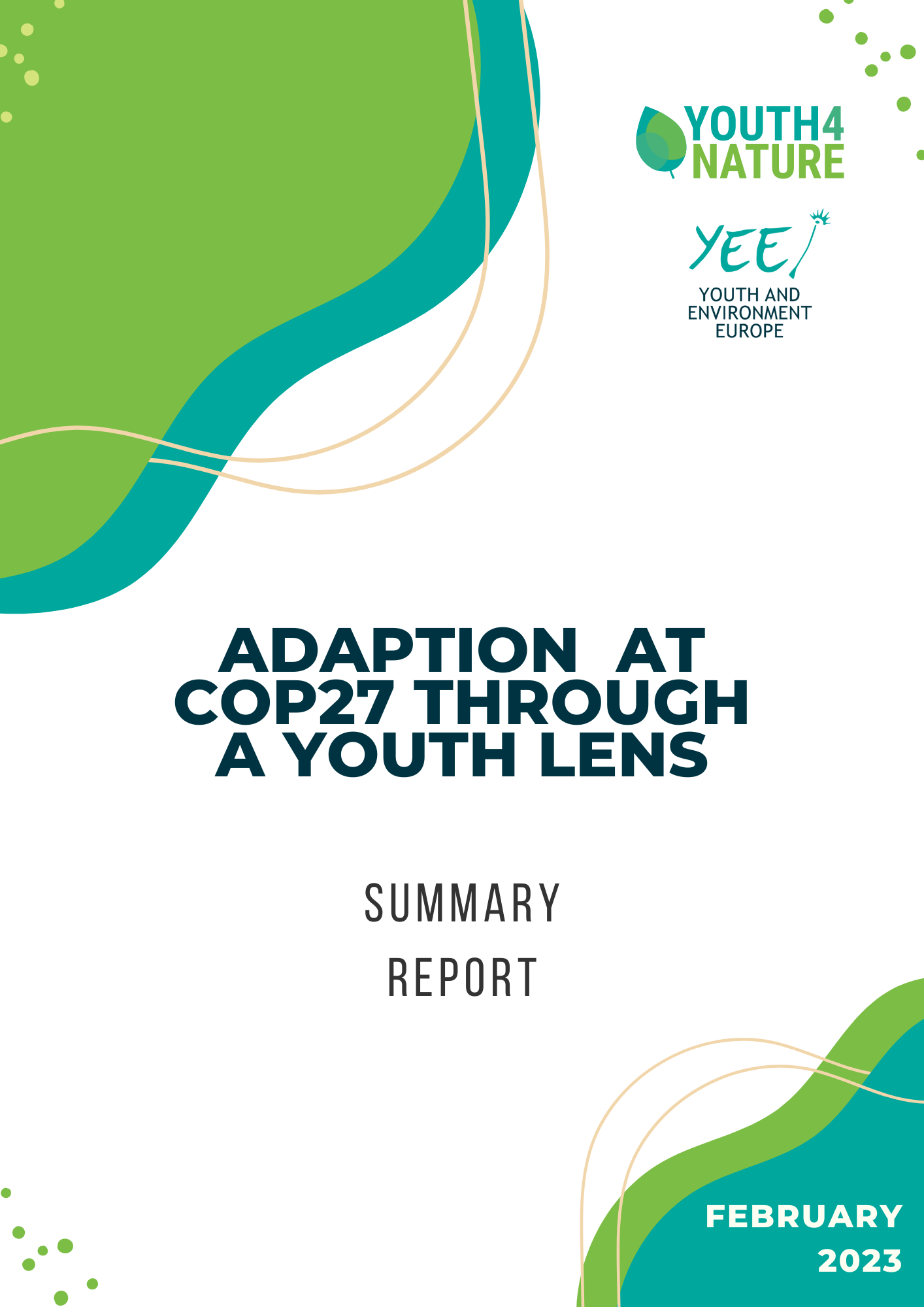

We need nature. Wetlands, forests, grasslands, marine habitats… all of them play a crucial role in regulating the climate and are vital to our survival. But did you know 80% of European nature is in bad shape? Luckily, all hope is not lost! We have a once-in-a-lifetime opportunity to turn the tide for nature in Europe: a law to #RestoreNature.
This opportunity is unique because this law will legally oblige EU countries to restore a set amount of nature. If they fail, they can be held accountable, and taken to court.
Right now, governments across the EU are discussing this new law. Join us and over 200 NGOs and ask your decision-makers to adopt a solid and urgent implementation of the law that can curb nature and climate crises.






You are just one step away from making a difference for nature
Send a nature picture and letter to your government and Members of the European Parliament!
Influence the EU Nature Restoration Law | #RestoreNature
https://yeenet.eu/wp-content/uploads/2023/03/1-1.png 810 810 YEE https://yeenet.eu/wp-content/uploads/2018/11/logo-yee-728x1030.png YEE2023-03-31 14:45:302023-06-21 10:50:53Influence the EU Nature Restoration Law | #RestoreNatureIs the Global Biodiversity Framework enough?
Discussing the outcomes of COP15 and the next steps

Written by
Heather Needham
Sophia Ullrich
Contents
Visual summary












Share this article
The Biodiversity Crisis
It is 2023 and we are in the midst of the 6th mass extinction. Unlike the five extinction events before, this one is primarily caused by human activity and the unsustainable use of land, water, and energy. According to the latest Living Planet Report, published in 2022, there has been an average 69% decline in monitored global wildlife populations between 1970 and 2018.
Due to the interlinked nature of the climate and biodiversity crises, rising temperatures are already causing mass mortality events, causing entire species to go extinct. Climate change is expected to replace land use change as the main driver for biodiversity loss if the 1.5-degree target will not be met, underlining the urgency of bold action on both crises.
The 15th Conference of the Parties (COP) of the Convention on Biological Diversity that was held in December 2022 was a crucial moment for 196 countries to come to an ambitious agreement that would put us on the path to come to “peace with nature“. With the stakes as high as they are today and none of the Aichi targets of 2010 being met, the hopes for a complementary goal to net zero by 2050 – net-positive biodiversity by 2030 – were high, together with the delivery of strong targets to set us on the path to a safe future for humanity.
What is the Convention on Biological Diversity?
In 1992, a historic international legal instrument (known as a treaty) for the conservation and sustainable use of biodiversity, and equitable sharing of genetic resources was agreed in Rio de Janeiro, Brazil. Today, 196 countries have ratified the treaty, known as the Convention of Biological Diversity (that’s nearly every country on the planet!).
The Parties of the CBD, meet regularly every two years to set commitments and global targets. In 2010, the countries united to set the twenty Aichi Biodiversity Targets (under the CBD Strategy Plan for Biodiversity 2011-2020) in order to make radical changes to protect and prevent irreversible biodiversity loss across the world. A decade later, on the expiration date, disappointingly, in a UN report, it was found that not a single one of the targets had been met.
With biodiversity declining rapidly over the last decade, an agreement and agenda for 2030 and 2050 was urgent. Two years delayed (December 2022), the members of the CBD met for COP15 which was held in Montreal, Canada with the goal to finalise and agree to targets for protecting and enhancing nature for 2030 and 2050.
Global Biodiversity Framework
The conference concluded with an international agreement that set new goals and targets, recognised as the Kunming-Montreal Biodiversity Framework (GBF). The GBF includes four overarching goals and 23 targets to achieve by 2030.
Kunming-Montreal Global Biodiversity Framework: 23 targets
| Target | Description |
| 1 | Effective management of land- and sea-use change, loss of highly important biodiverse areas close to zero by 2030 |
| 2 | Effective restoration of 30% of degraded ecosystems by 2030 |
| 3 | Effective conservation and management of 30% of land and 30% of oceans by 2030 |
| 4 | Halt human-induced extinctions and maintain and restore genetic diversity |
| 5 | Sustainable use, harvesting and trade of wild species |
| 6 | Mitigate or eliminate the impacts of invasive alien species, reduce the rates of establishment of invasive species by 50% by 2030 |
| 7 | Reduce pollution risks and impacts from all sources by 2030, reduce the overall risk from pesticides by half |
| 8 | Minimise the impacts of climate change and ocean acidification on biodiversity |
| 9 | Ensure sustainable use and management of wild species, while protecting customary use by Indigenous peoples |
| 10 | Sustainable management of areas under agriculture, aquaculture, fisheries and forestry |
| 11 | Restore and enhance ecosystem function through nature-based solutions and ecosystem-based approaches |
| 12 | Increase the area and quality of urban green and blue spaces |
| 13 | Fair and equitable sharing of the benefits arising from the use of genetic resources |
| 14 | Integration of biodiversity into policies and development across all sectors |
| 15 | Enable businesses to monitor, assess and disclose their impacts on biodiversity |
| 16 | Encourage sustainable consumption, including by reducing food waste by half by 2030 |
| 17 | Strengthen capacity for biosafety measures and ensure benefits-sharing from biotechnology |
| 18 | Phase out or reform harmful subsidies in a just way, reducing them by $500bn by 2030 |
| 19 | Substantially increase financial resources, mobilise $200bn per year by 2030 from all sources, including $30bn from developed to developing countries |
| 20 | Strengthen capacity-building and technology transfer |
| 21 | Integrated and participatory management, including the use of traditional knowledge |
| 22 | Equitable representation and participation of Indigenous peoples and local communities |
| 23 | Ensure gender equality in the implementation of the framework |
30 by 30
One of the targets that had been on the agenda far in advance is target 3. Pushed for by the High Ambition coalition (an intergovernmental group of more than 100 countries), the target calls for 30% of the earth’s land and sea to be effectively conserved and managed by 2030. This should be achieved through the establishment of protected areas (PAs) and other area-based conservation measures (OECMs).
On a European level, the most important categories of PAs are the Natura 2000 network established through the Birds and Habitats Directives, the Emerald network and UNESCO Biosphere reserves. Target 3 acts as the replacement of Aichi target 11, which aimed for the protection of at least 17 percent of terrestrial and inland water, and 10 percent of coastal and marine areas. While that target was not met on a global level, it was partially successful in numbers, the number of terrestrial PAs increasing from 10% to 15% and from 3% to around 7% in marine areas, as reported in the Global Biodiversity Outlook 5.
However, concerns regarding the actual quality of the PAs were high, as many lack connectivity, don’t always safeguard the most important areas for biodiversity and are not equitably and effectively managed. The quantity vs. quality debate is continuing now with the 30 x 30 target, demanding the GBF to emphasise the quality of PAs and OECMs to accompany the 30% target.
In connection to target 22, which calls for equitable representation and participation of indigenous peoples and communities (IPLCs), there is serious concern about the 30 by 30 target on indigenous rights, as it fails to recognise indigenous rights as a separate category of PAs. In a joint statement, a group of major human rights organisations such as Amnesty International claimed that the target “will devastate the lives of Indigenous Peoples and will be hugely destructive for the livelihoods of other subsistence land-users, while diverting attention away from the real drivers of biodiversity and climate collapse”.
This so-called “fortress conservation” describes conservation initiatives that focus on nature in the very narrow sense and don’t take traditional territories and livelihoods of IPLCs into account, not acknowledging traditional knowledge. Studies have found that areas managed by indigenous communities contribute equally as much to global biodiversity conservation as state-governed areas and other governance types.
Increase finance for biodiversity
Target 19 of the Framework aims to mobilise at least US $200 billion per year in international biodiversity funds and raise international financial flows from developed to developing countries to at least US $20 billion per year by 2025, and to at least US $30 billion per year by 2030.
Directing funds towards developing countries is important since they are often home to the largest share of the world’s biodiversity and face significant economic challenges that can make it difficult to invest in biodiversity conservation and restoration efforts. However, according to a report from the Nature Conservancy, at least $700 billion (again, instead of US $200 billion) a year is needed to fund activities that benefit nature and resultantly, reverse global biodiversity loss by 2030. Therefore, there is a shortfall in international biodiversity funding and concerns about how the gap in biodiversity finance will be achieved.
In addition at the Conference, it was agreed that the Convention through the Global Environment Facility (GEF) will set up a Special Trust Fund (known as the GBF Fund) to act as a financial mechanism for the implementation of GBF. However, the GBF is seen as a shortfall since the Parties failed to create a dedicated international biodiversity fund separate from the existing GEF fund. The GEF is under-resourced and also addresses other global issues such as climate change (it funds UNFCCC and the Paris Agreement). Moreover, there are issues accessing the GEF funds and bias of funding towards countries that have the capacity to submit proposals.
Reduce environmentally damaging subsidies
Target 18 of the Framework aims to phase out or reform harmful subsidies for biodiversity and reduce them by at least USD 500 billion per year by 2030. A study this year found that global governments spend at least $1.8 trillion a year (equivalent to 2% of the global GBP) on subsidies that harm the environment. Fossil fuel, agriculture and water industries receive 80% of these EHS per year. A similar target for reforming subsidies was part of the Aichi targets which wasn’t achieved. Governments failed to act on subsidies and there is concern that Target 18 of the GBF might not be reached. The loss of biodiversity from perverse subsidies undermines and works against the goals of the CBD.
There is a need to redirect a significant proportion of the subsidies to support policies that are beneficial for nature, rather than “financing our own extinction”. Redirecting and repurposing subsidies can make an important contribution to finding the US $700 billion per year in biodiversity funding needed. In the EU Biodiversity Strategy for 2030, the European Council pledged to phase out EHS and reform subsidies that have negative impacts on biodiversity. Moreover, the EU is working to reform the Common Agricultural Policy, which has historically supported intensive farming that can contribute to biodiversity loss, to promote more sustainable farming and reduce the use of pesticides and fertilisers. In addition, the EU’s Common Fisheries Policy includes measures to promote sustainable fisheries management and reduce the environmental impacts of fishing activities.
Youth NGOs and their role in nature conservation
While The Global Biodiversity Framework has increased ambitions compared to its predecessor, is without a doubt an imperfect solution. Calls for higher numbers in funding, changes in the funding structures as well as concerns about indigenous rights and the quality of Protected Areas are credible and are just examples of weak points of the GBF.
To save the trust in and credibility of the agreement, the actual implementation of the targets in the coming 2 years (until the next CBD COP) will be crucial. If done right, the agreement does have the potential to make a difference in biodiversity conservation on a global scale. However, taking into account the lack of quantifiable measures that make it possible to hold countries and governments accountable, the role of actors of the civil society and ultimately Youth is undeniable and should act as a motivation to push for the implementation of the agreement.
Prior to the Conference, the Global Youth Biodiversity Network (GYBN) had expressed strong concern that judging from the draft agreement, the GBF would lead to another decade of „more of the same“, describing a lot of the proposals as „false solutions“. Following the activities of Global youth networks and NGOs such as the GYBN is the first easy step you can take to step up for global biodiversity conservation. Holding governments accountable is up to us, especially considering the fact that the agreed targets are not legally binding for the signing parties. That is why getting involved on a national level is just as important, which can easily be done by contacting the MP of the department for environment, raising questions, concerns and thoughts. Youth are raising awareness for the issues concerning nature conservation and climate change by getting involved in International Youth Boards and organisations and making sure that their voices are heard.
More To Explore
Is the Global Biodiversity Framework enough?
https://yeenet.eu/wp-content/uploads/2023/03/1-2.png 540 540 YEE https://yeenet.eu/wp-content/uploads/2018/11/logo-yee-728x1030.png YEE2023-03-30 13:13:382024-09-30 16:44:39Is the Global Biodiversity Framework enough?Germany has a toxic boyfriend
The relation between the country and coal in the context of the climate and energy crises.

How did we end up with an energy crisis in Europe?
The consequences of the sudden cut in oil production caused by the covid-19 pandemic, together with the sanctions (and the related retaliatory policies) that followed the Russian invasion in Ukraine, stifled the supply of fossil fuels to Europe. With gas, coal and oil becoming increasingly harder to source, their price has skyrocketed, thus triggering an energy crisis.
Effect of the Energy crisis in Germany
Of all the countries in Europe, Germany is particularly vulnerable to this disruption in the global fossil fuel supply chain. On the one hand, the country has the highest demand for electricity in Europe. On the other, most of this demand is met by burning imported gas, coal and oil (i.e., those same commodities whose price has gone through the roof recently). To make things worse, until recently the country’s primary supplier was – you guessed it – Russia. I don’t want to bother you too much with the numbers, but in case you are interested here are two detailed sources to learn more about the German Energy Mix and its Fossil Fuels Supply chain.
As of Spring 2022, government officials find themselves in a tricky position. They need to come up with a way to meet the biggest demand for energy in the continent, or else the country’s economy will collapse, but imported fossil fuels are increasingly inaccessible and expensive. To respond to these challenges, a wide set of policies are implemented with the aim to reduce Germany’s dependence on international markets. Some actively foster the energy transition, by boosting investment in renewables and promoting consumer and producer sobriety. Others, however, go in the opposite direction.
Breaking a nine year trend, since 2021 the share of coal used in the country’s energy mix has started to grow again. While in 2019 the government had established a plan to completely phase out coal by 2038, now the priorities seem to have changed. In an effort to replace some of the energy previously produced with Russian gas and oil, it has been decided that 20 coal-burning plants that were supposed to be shut down by 2023 (according to the original timeline) will instead continue operations this year. The inability to source gas from international markets has also been used to provide political legitimacy to the decision to go through with the expansion of the Garzweiler II brown coal (aka lignite) mine, which now also includes the soil under the recently demolished Lützerath.
Not everyone agreed with the idea of destroying this small town in the middle of the Rehin region. Since 2020, thousands of activists had been occupying the area to prevent the expansion of the mine. The argument was simple: if the fuel under Lützerath is burnt, its emissions will make it hard for Germany to meet the emission reduction targets it agreed to in 2015. This claim was backed by the German Institute for Economic Research. In the end, the pro-coal faction won and in late January the village was evacuated, allowing the expansion to start.
Can coal be considered a temporary solution to the energy crisis?
If what we are looking for is an immediate way to provide more energy to the system, increasing coal consumption seems to be an effective and easily achievable — albeit a bit short sighted — solution to the energy crisis. Firstly, internationally sourced hard coal offers a cheaper substitute to the more scarce and more expensive gas. Secondly, lignite is the only fuel that can still be domestically sourced from the country’s active mines. As such, it is a more reliable, less volatile source of energy, whose use contributes to the temporary strengthening of the country’s energy sovereignty. Finally, the infrastructure to turn coal into energy is already there, meaning that increasing capacity requires smaller investments and less time.
Nonetheless, all this comes at a great environmental and social cost. At the global level, coal is the deadliest source of energy. Throughout the world, for every terawatt-hour of electricity produced using hard coal 25 people lose their lives. The figure rises to 32 deaths when we consider lignite (which, as a reminder, is the type of coal that is mined in Germany). Looking more specifically at the case of Germany, coal is responsible for up to 2260 preventable deaths. If you want to learn more about how deadly are other sources of energy, you can check out this interesting visualization made by Statista. The reason behind this macabre first place is pretty straightforward : coal (and especially lignite) releases a high quantity of toxic pollutants in the atmosphere. Talking about first places, the burning of coal is also the single largest contributor to anthropogenic climate change, emitting more CO2 per gigawatt-hour produced than any other fossil fuel. Consequently, if coal is not eliminated from the country’s energy mix fast enough, meeting the emission reduction targets agreed upon in Paris becomes basically impossible, as we were reminded by the “1.5 degrees means Lützerath stays” banner outside the entrance of the occupied town.
The example of Lützerath also points at another important limitation of coal. Lignite mining takes space and in doing so, it destroys both social and natural ecosystems. Since the end of WW2 around 300 cities have been destroyed to make space for extraction operations, with that more than 120 thousand people have been eradicated from their local communities and relocated somewhere else. With that, pieces of cultural heritage have also been demolished, such as the church of St. Lambertus in Immerath. Aside from impacting human settlements, land mining also radically changes the landscapes of the areas in which it is performed, thus destroying the habitat needed for the local flora and fauna to survive and increasing the risk of loss of biodiversity.
Ok, but what do we make of this – maybe a bit disproportionate – pros and cons analysis? In light of what I just said, I would argue that increasing coal use cannot be an answer to the crisis. We know that producing electricity by burning this fuel implies a high environmental and social toll that is hard to justify. Because of this, the government has decided to phase out coal completely by 2038. At the same time, however, to this day coal is still a pillar of the German economy. In 2021, it supplied 30% of the national demand for electricity and, in 2018, it provided almost 40 thousand jobs (this last piece of data is a bit old, but given the trends we described before I would expect up to date figures to still be a sizable number). Consequently, unwinding this deep integration without causing a socio-economic crisis takes time – as shown by the fact that the final target date set by the government is in 15 years – and erasing the progress done in the last couple of years makes the process even longer. This means more pollution, more land use and more preventable deaths. On top of this, the country really does not have the space of maneuver to delay this process any further than it already has if it wants to meet the emission reduction targets it agreed to in 2015.
How do you deal with the energy gap that you could have otherwise filled with coal?
While renewables are of course an option, I would suggest more emphasis should be put on the reduction of the national energy consumption, rather than on diversification. The energy and environmental crises are showing us that it is now anachronistic to assume we have access to an unlimited supply of energy ready to satisfy whatever demand we might have. Hence, it is time that we come to terms with this reality and start building our production and consumption patterns based on the amount of energy that is sustainable to consume. I understand that this is a radical change, but, whether one likes it or not, we are entering an age of limits. If we adapt to it gradually, we will have to sacrifice a bit more at first, but we will be better fit for it in the long run. If we ignore what is happening, the change in the way we live will be more traumatic and potentially dangerous.
Of course, this line of reasoning stretches further than the borders of Germany and, mutatis mutandis, applies to every policy solution that is supposed to tackle the environmental and energy crises.
More articles
The war in Ukraine has highlighted the significance of energy policy as a major power issue. It is an opportunity to break
How is our generation responding to the challenges posed by the energy crisis and the imperative for a green transition? This thought-provoking

In this article, we will delve into the exciting world of hydrogen as a potential solution for energy storage, aiming to overcome

Learn about the positive and negative outcomes of the liberalisation process, and how energy communities could play a major role in the
More To Explore
Germany has a toxic boyfriend
https://yeenet.eu/wp-content/uploads/2023/03/IG.png 675 675 YEE https://yeenet.eu/wp-content/uploads/2018/11/logo-yee-728x1030.png YEE2023-03-27 16:01:412023-06-23 09:18:20Germany has a toxic boyfriend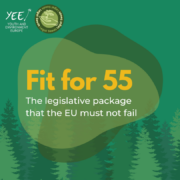
Written by
Contents
Visual summary










Learn more about the project
Share this article
What is Fit For 55?
The European Green Deal significantly raises the EU’s climate ambition to deliver on its multilateral commitments under the Paris Agreement (2015) and put it on a path toward climate neutrality. The FF55 is a set of twelve proposals presented by the European Commission on 14th July 2021 that aims to revise and update EU climate policies with the objective to make a legal obligation for all the EU countries to reduce greenhouse gasses (GHG) to 55% compared to 1990 by 2030. It implements and meets the longer-term Green Deal, by aligning with the EU objective of reaching climate neutrality by 2050.
The aim is to guarantee a just and socially fair transition and strengthen innovation and competitiveness of EU industry while ensuring a level playing field vis-à-vis third country economic operators. Furthermore, it is used as a tool for the EU to lead the way in the global fight against climate change.
The Fit for 55 package’s proposals were presented and discussed at a technical level within the Council’s working parties responsible for the policy area concerned before they landed on the table of EU member states. Discussions are held to prepare the ground for an agreement on the proposals among the 27 member states. EU ministers, in various Council configurations, then exchanged views and seeked an agreement on a common position on the proposals. This forms the basis on which the presidency of the Council then engaged with the European Parliament in negotiations to find a common agreement in view of the final adoption of the legislative acts.
The Fit for 55 package was submitted to the Council in July 2021 and it is being discussed across several policy areas, such as environment, energy, transport, and economic and financial affairs. Concretely, the FF55 is composed of different rules regulating climate-related sectors and includes a high variety of sectors, among which the: Renewable Energy Directive (RED); The Emission Trading System (ETS); The Effort Sharing Regulation (ESR); The Land Use, Land Use Change, and Forestry Regulation (LULUCF).
2019, 2020 & 2021 – How do we achieve climate neutrality?
The Fit for 55 takes its sources in 2019 when the EU leaders endorsed the 2050 Climate neutrality objective. Poland was the only one to express reservations on the subject. Following this resolution, in October 2020 the EU leaders discussed the EU’s Climate ambition for 2030 and the Council adopted conclusions on the EU biodiversity strategy for 2030.
Things accelerated in April 2021 when the Council and the Parliament reached a provisional agreement of reducing greenhouse gasses (GHG) to 55% compared to 1990 by 2030. On 20 July 2021, EU environment ministers discussed FF55 during an informal meeting, and from this date, the official discussion started.
The first formal minister debate took place on October 6 and was focused on the impact of the proposals on citizens, emissions trading to buildings, and road transports.
For the last meeting of the year 2021, the environment Council took note of a progress report prepared by the Slovenian presidency and held a policy debate on five of the files in FF55 which are:
- revision of the greenhouse gas emission allowance trading scheme (EU ETS)
- revision of the regulation on binding annual greenhouse gas emission reductions by member states (effort sharing regulation)
- revision of the regulation on greenhouse gas emissions and removals from land use, land use change and forestry (LULUCF)
- revision of rules for CO2 emission performance standards for new cars and vans
- regulation establishing a social climate fund
*Infographic – Fit for 55: how the EU will turn climate goals into law
2022 – securing the energy supply
On 24 February 2022, the Russian invasion of Ukraine started. Since then, the EU has been facing the challenge of security of energy supply due to its dependency on Russian gas, and as 45% of natural gas consumed by the EU comes from Russia, it was quickly necessary to find alternative sources and therefore, by force of circumstance, to review the FF55 energy plan.
Thus, within the Parliament, ongoing discussions target the ways in which these rules can be amended, changed, and updated to meet the climate policy objectives. The European Commission presented on March 8 the idea of coming up with a new project which aims at phasing out Russian fossil fuels and becoming more autonomous and independent regarding its energy supply and security. The plan was well received by EU leaders, who signed the Versailles declaration. They all agreed on the necessity to make the EU independent from Russian energy imports as soon as possible. On May 18, the Commission presented the REPowerEU plan, and a week after the EU Energy Platform Task Force was established to secure alternative supplies.
On 29 June 2022, the Council of the EU adopted a common position on the package presented in July 2021 by the Commission. A general approach under the French Presidency was agreed on, which differs in significant ways from the European Parliament’s Committee for Industry, Research, and Energy (ITRE) report.
More precisely, Member States adopted a common approach to the EU emissions trading system (EU ETS), effort-sharing between member states in non-ETS sectors (ESR), emissions and removals from land use, land-use change and forestry (LULUCF), the creation of a social climate fund (SCF) and new CO2 emission performance standards for cars and vans.
The Council supports a binding renewable energy sources (RES)target of only 40 % by 2030, reflecting the Commission’s original proposal (July 2021). The general approach offers Member States the flexibility to choose between a 13% reduction in GHG intensity or a 29 % share of RES in the final energy consumption in the transport sector by 2030. The general approach proposes lower sub-targets for mainstreaming RES in heating and cooling (+0.8% annually until 2026 and +1.1 % thereafter) and industry (+1.1% annually), but also requires that 35 % of the hydrogen used in the industry should come from RFNBOs by 2030, rising to 50 % by 2035.
This common position is called “general approaches”.
The year 2022 ended up with endless negotiations regarding nuclear power. The socialists and greens support banning atomic power, but some countries, more nuclear-dependent such as France, are opposing the above positions towards atomic energy. Finally, on July 6, the Parliament voted to record nuclear power as renewable energy. The chapter on renewable energies of FF55 is therefore greatly impacted since the threshold to be met will now include not only solar and wind energy but also renewable nuclear and gas.
2023 – planning ahead
Even though 2023 just started 3 months ago, the discussion around the possibility of setting national sustainable aviation fuel (SAF) is still in process. Indeed the aviation industry is one of the main parts of Fit For 55. Under this regulation, all planes departing from an EU airport will have to refuel as they become available with sustainable aviation fuel (CAD) — low-carbon alternatives to kerosene made from advanced biofuels and hydrogen-derived green synthetic fuels.
The European Parliament and the Council do not agree on the percentage of CAD to be imposed — the Parliament wants 85% by 2050, while the Council sticks to the 63% proposed by the Commission — and on the matters first to be designated as “sustainable”.
The inclusion of nuclear as a potential energy source to create synthetic fuels was the red line for Socialist (S&D) and Green (Greens/EFA) MEPs.
FuelEU Maritime, the sibling of ReFuelEU Aviation, will also be negotiated in 2023.
Unlike the aviation fuel law, FuelEU does not mandate the type of fuel that must be used in ships. Rather, it sets increasingly strict carbon intensity limits that must be respected.
However, green-minded legislators are concerned that giving the shipping industry carte blanche will see them choose the cheapest rather than the greenest option to meet the targets. Specifically, the option to fuel ships with liquefied natural gas – a fossil fuel – up to 2030 has proven controversial.
Finally, concerning the automotive sector, new thermal engine cars will be banned from sale by 2035. However, the lack of charging stations creates a significant problem for the development of electric cars.
Both the private sector and national governments are working to increase the availability of charging points. In Brussels, the issue is addressed through the Alternative Fuels Infrastructure Regulation (AFIR).
AFIR sets out requirements for the number of charging stations along the EU’s main transport corridors and aims to make it easier to pay for charging, particularly when crossing into another EU country.
Access to Justice in the FF55
Other than being crucial that MEPs find fast, common agreements on these, it is also likely crucial that Member States (MSs) implement and enforce the package. Once adopted by the EU, the package will be in the hands of MSs, which have the responsibility to implement the updates.
The Aarhus Convention, signed in 1998, sets three important pillars —access to information, public participation, and access to justice — which are the cornerstones of environmental and climate governance in Europe. As also parties of the Convention, EU member states and the EU itself have an obligation to implement all its pillars.
Among these pillars, ensuring that EU citizens and NGOs have the right of access to justice is essential to make sure that member states are held accountable in case of disrespect of environmental and climate objectives. Despite the fact that regulations have a direct effect on Member States’ laws, access to justice in environmental matters is still very limited. The right of access to justice has been therefore subject to strong advocacy work from EU environmental NGO. According to them, it is crucial to have a liability mechanism open to civil society for holding MSs accountable for any violation: the climate emergency does not allow delays in the implementation of measures.
With the massive work around the FF55, there is a concrete possibility to include access to justice provisions within EU climate rules and ensure the empowerment of civil society in challenging MSs when not complying with the agreed targets. As a matter of fact, there is neither democracy nor a green Europe without sound and coherent access to justice: the FF55 must not be the exception.
Finally, it is important to remember that FF55 is still open for updates, the negotiations are still in process so NGOs can and must put pressure on Member States to make this agreement sustainable and greener.
More articles

Rivers – anywhere you are in Europe, there must be a river not far from you. Ancient Greeks would marvel at rivers
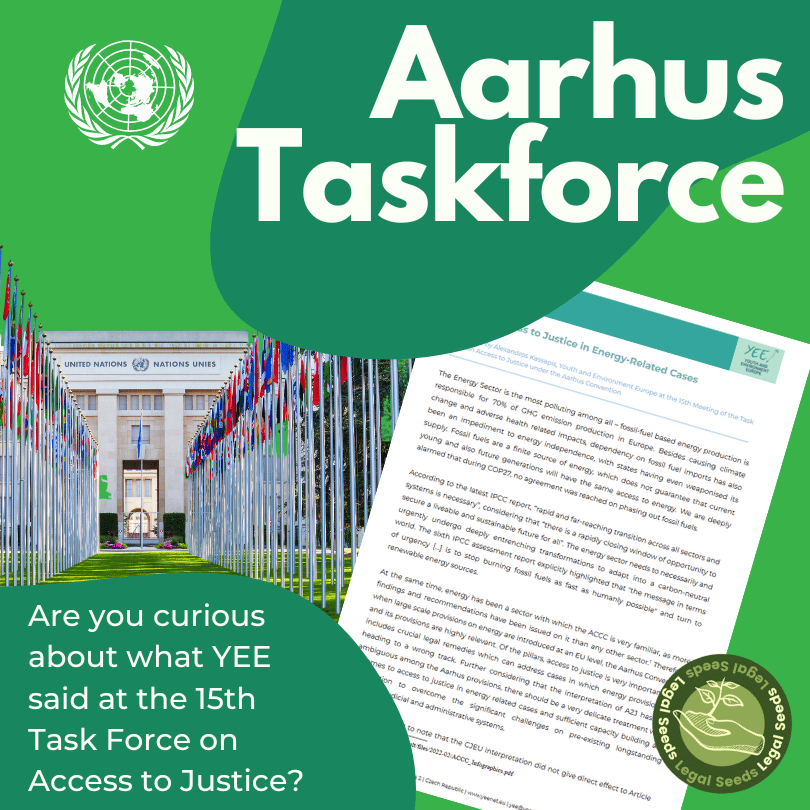
The Environmental Law Team of YEE actively participated in the 15th Task Force on Access to Justice in Geneva, sharing valuable insights.

The discussion within the EU around the Fit For 55 legislative package is at the core of the EU’s current action on
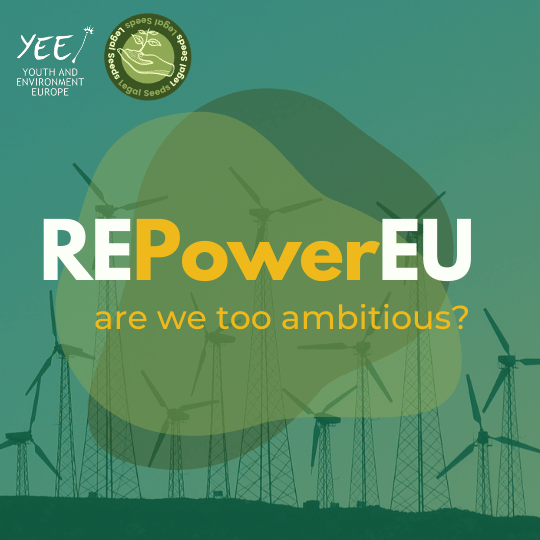
If exiting from the Russian fossil fuels, gas and coal import is a necessity, should it be then done at all costs?
More To Explore
Fit for 55: the legislative package that the EU must not fail
https://yeenet.eu/wp-content/uploads/2023/03/Ff55-Article-Cover1.png 810 810 YEE https://yeenet.eu/wp-content/uploads/2018/11/logo-yee-728x1030.png YEE2023-03-23 08:24:382023-03-31 15:01:18Fit for 55: the legislative package that the EU must not failClimate adaptation at COP27 through a youth lens
Youth and Environment Europe (YEE) and Youth4Nature (Y4N) are international youth-led organisations within the nature-climate nexus that strive to bring the voices of youth from across Europe (YEE) and across the globe (Y4N) to the forefront of environmental discussions and decision-making.
Building on this synergy and upon COP27 momentum – two weeks within the international agenda where all eyes focused on the climate negotiations – the two organisations met on the ground at Sharm el-Sheikh to share knowledge amongst youth peers globally on what adaptation is and how youth experience it, with an emphasis on amplifying diverse youth perspectives and environmental justice.
Points of the discussion
- What does climate adaptation mean for you?
- What have you heard about climate adaptation during COP27?
- What do you think are the gaps and how should we move forward?
- How would you link adaptation to climate justice?
- How can we achieve more involvement in climate negotations?
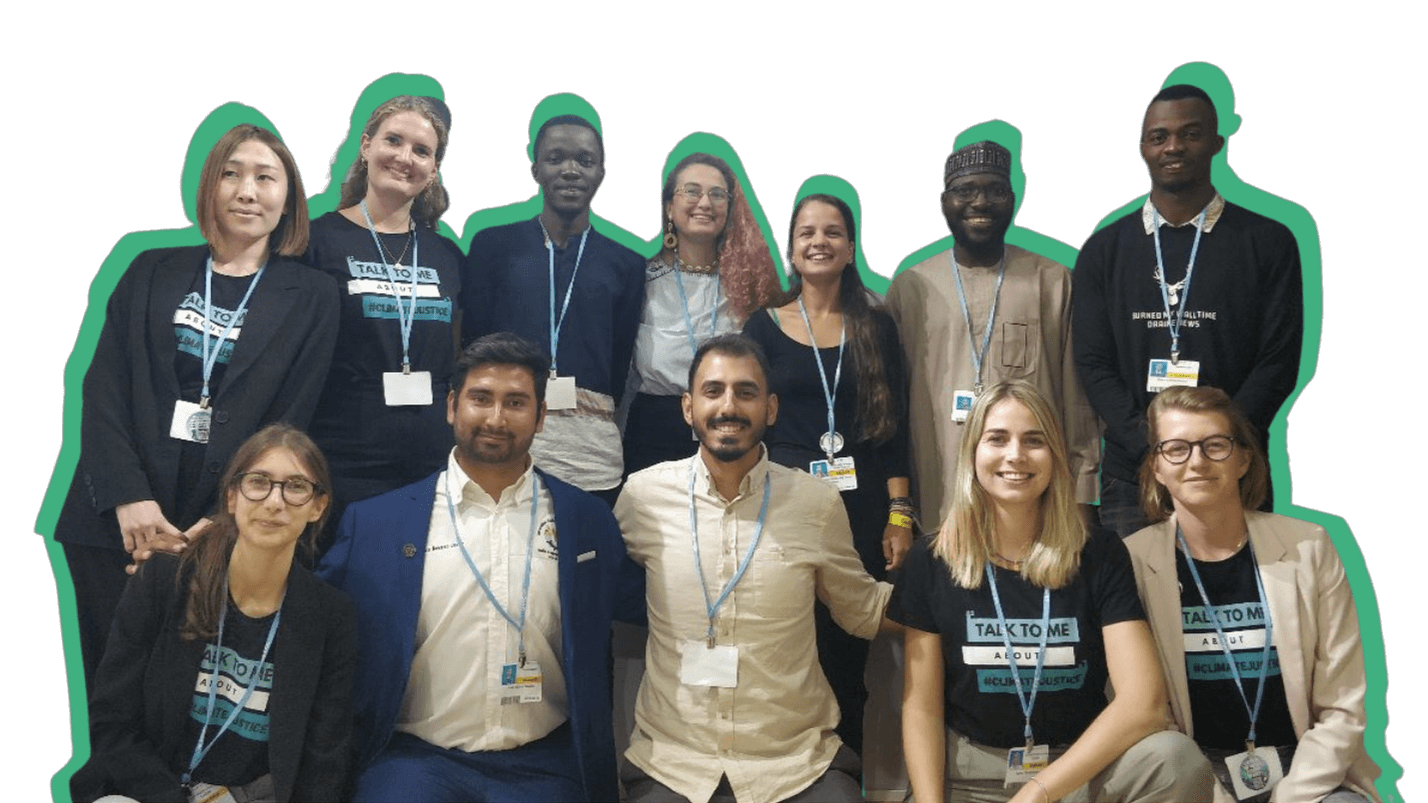





Adaption at COP27 through a youth lens | Report
https://yeenet.eu/wp-content/uploads/2023/03/YEEY4N-COP27-Adaptation-Report-Instagram-Post-Square.png 675 675 YEE https://yeenet.eu/wp-content/uploads/2018/11/logo-yee-728x1030.png YEE2023-03-15 11:26:272023-06-23 09:18:04Adaption at COP27 through a youth lens | ReportGranting Opportunity
Overview
YEE is excited to announce the opportunity to support 7 grant projects by youth NGOs aiming to mobilise and empower young people from marginalised communities on a local or national level to either:
- Explore youth-led local or national level work on designated capacity building topics
- Use advocacy initiatives to engage with marginalised communities [BIPOC, LGBTQI+, Roma communities etc.]
Application deadline: 31st March 2023
What does the funding include?
- 3,000 EUROs per project
- Monthly mentorship support from YEE Advocacy Working Group
- Monthly peer support from the selected organisations
The possible format can include:
- Conferences
- Workshops
- Policy papers
- Series of local actions
- Toolkit creation
- Training courses
- Content creation
Activities can include:
- Access to negotiation processes
- Advocacy training
- Assisted in the creation and planning of the proposed project
- Series of information sessions
For more inspiration, activites can include:
Adapting the physical space to non‐ barriers, creating educational materials for people with visual impairment, building community venues, supporting technological transition and skill‐building, building human capital, 1×1 mentorship programs for young people, developing a small fund for local initiatives carried out by young people with fewer opportunities.
Funding requirements

Other eligable countries include: Austria, Bulgaria, Croatia, Czech Republic, Estonia, Germany, Hungary, Latvia, Liechtenstein, Lithuania, Moldova, Poland, Romania, Slovakia, Slovenia, Ukraine
At least 10 young people from marginalied communities benefited from the project, with an equitable balance on gender in the composition.
The programme must be run and organised by youth (under the age of 30). The project must run between April 2023 to August 2023 and follow the non-formal education format.
Have questions? Get in touch!
Granting Opportunity | Showcasing the Unheard
https://yeenet.eu/wp-content/uploads/2023/03/Showcasing-the-Unheard-subgranting.png 810 810 YEE https://yeenet.eu/wp-content/uploads/2018/11/logo-yee-728x1030.png YEE2023-03-14 13:34:582023-03-31 15:01:18Granting Opportunity | Showcasing the UnheardI am amazed about activists and their passion and drive
Disclaimer
The views and opinions expressed are those of the authors and do not necessarily reflect the official policy or position of YEE.
Kacper Lubiewski is a 19-year-old Israeli-Polish climate activist living in Berlin. He started his activism in 2019, joining the climate movement in the same year. He is also a member of a housing activist group. For him, activism means working towards change and making a difference. He encourages those interested in activism to research their chosen cause, find a community, and take care of themselves to avoid burnout.


Tell us a bit about yourself. Who’s Kacper?
My name is Kacper Lubiewski, I’m an Israeli-Polish activist. I have been based in Poland for the majority of my life, but for a year now I’ve been living in Berlin. I’m 19, and the majority of the activism that I used to do and that I’m still doing is climate activism. Since I moved to Berlin I also started being active in a housing activist group.
How did it all start for you?
It all started for me in 2019, so I have been active for four years now. I was 15 at the time and I attended a session of the European Youth Parliament (a great organisation by the way that I am recommending everyone to check out) and I met a lot of fantastic and motivated people there. This has really put me in a dilemma with what I am doing with my free time. I come from a village next to a small town in Poland called Opole and in my life I had this feeling that everything is sort of just omitting and getting by Opole and there’s nothing happening there.
And 2019 was the time of Greta Thunberg and climate school strikes. I wanted to be part of it. I saw great potential in the movement, that was just getting started but seemed like a cause that I wanted to help with. So yeah, that was definitely one part of it, just being surrounded by and seeing for the first time a lot of people who are active, passionate and dedicated.
I realised that’s an important cause and I’m not going to let another great big thing just not happen and that’s how I started a local group of Fridays for Future in Opole and then I started working with the national and international movement.
What does activism mean to you?
I think that activism can be understood very broadly, as in this day and age there are just so many ways to be an activist.
“You can be a cyber activist, a street activist, you can be a spokesperson, you can do graphics, you can do some other type of art you can use to support your voice.”
There are so many different areas but I think what binds it all is the drive for change. And I think that activists realise that there is something wrong in the status quo, be it climate policy or the situation of the queer community. And then they sense this need for change there and they work towards it.
I started being active in the climate movement just because I realised that this is purely a survival issue for the entire planet and the next generations on it. Sometimes it is a question of survival and knowing that this is the very last moment that we can do something about the climate catastrophe before we cross the tipping points.
What activities are you engaged in at the moment?
I’m still quite fresh in the housing movement. It’s only been a few months and I have dedicated most of my time to just learning and reading up on the issue. But when it comes to the climate movement, I’m proud of quite a few things. I feel like I and the rest of the people in my local group have effectively brought the climate movement to my city. We have organised dozens of different protests and we stayed vocal on a lot of issues. We have organised different types of protests, but I’m most proud of a very big march that we did there.
That was around the time of COP26 in Scotland. I’m also proud of all the workshops that we’ve organised. Educating others has become such a big passion of mine and I have organized workshops on the different intersections of climate catastrophe with other issues, like the queer movement, or I talked about the comparison of Polish and German climate policy.
I myself am Jewish, so I was very excited to see the intersection between the Jewish culture and the climate crisis. So I also led such workshops and I’m currently working as a climate educator in an online school.
What kind of communities do you work with?
At this point in my life, I like to identify myself as an independent climate activist. I think that over those four years, I have worked with pretty much everyone that was there in Poland. For example the Rise for Future, Greenpeace, 350.org, with Extinction Rebellion, with everyone that was there that they considered the issue important.
Right now, I think I’m just supporting whatever causes I find necessary and interesting. When it comes to the housing movement, I’m part of a group called Right to the City, which is based in Berlin, part of a bigger campaign in Berlin called Deutsche Wohnen and Co Enteignen. We are an English-speaking group of immigrants in Berlin who try to give this unique perspective on the housing crisis from an immigrant’s perspective.
What do you enjoy most about being an activist?
What I enjoy the most is the beautiful community that it creates. I think that activism is just full of beautiful people with so much drive and passion for knowledge, for change, for growth. I have met my best friends there, people that are closest to my heart at this point.
And I’m just utterly amazed by what they do and by their passion and drive. I think that being part of a group helps you feel that you’re not alone when faced with big issues like discrimination or climate catastrophe. And you feel like you’re part of something bigger and that in this collective, you can cooperate to work for a greater good. And I definitely felt very supported. I grew a lot. I feel that I am simply a better person through my activism. The community definitely plays the biggest part for me.
How would you go about engaging more diverse groups of people into activism?
When it comes to the right to the city, we’re an immigrants-based group and you would think that it naturally means the immigrant community in Berlin is diverse. That isn’t actually the reality that often, because even in those marginalised communities, the default is there are only the most privileged in that community. So we have a lot of Western Europeans in Berlin, a majority of the group is white. There are some people of color as well as Eastern Europeans, myself included.
We are currently brainstorming how we can expand the representation in the group to people of lower income, perhaps to people that don’t speak English fluently and to more people of color. We need to improve our outreach and actively engage with those groups.
In Fridays for Future, however, I think that the movement that we started with was diverse. We had people from big towns, small towns, a lot of women, a lot of queer people, and I would even say people of very different cultural backgrounds.
We have very much celebrated that diversity. It went like: “You come from a small town?” “How can we platform your voice and make sure that you’re heard?” so that it is not just the Warsaw voices that are being heard.
How has the climate movement changed since you joined in 2019?
It got better funded. It also got better organised, there are more people with more experience. People get better at what they do over time. It also got incredibly more diverse.
There are lots of different initiatives, small, big, loosely connected, very tight communities with a lot of philosophy behind them for the elderly, or for young people, for the in-between… There’s just so much to choose from.
It has also radicalised itself in a good way. I think that the climate movement has begun to start asking itself about questions of intersectionality of the voices of the people from the Global South. It has also definitely started looking more at the housing crisis and how homelessness intersects with the climate crisis.
What’s next for you?
I want to stay within the climate movement. I definitely want to go to different blockades. I want to help out other activists. I want to support them however I can. I don’t think that I want to get involved in a particular group at the moment. I definitely want to get deeper into housing though.
“The reason why I got into the housing movement was because I experienced the housing crisis myself.”
I realised how cruel it is and that has really pushed me towards organising myself within that sphere. The campaign that I mentioned before will be pushing for another referendum in Berlin to expropriate the very big housing companies that own a great deal of Berlin’s housing. I definitely want to work within that campaign and collect the signatures and engage in outreach and education on that topic.
If you could send a message out to these people that are thinking of getting involved in activism?
Do it. I would say to everyone who wants to get involved in activism, do it.
And research the cause that you want to get involved in. Knowledge is a great power and it makes your work a lot easier, better informed and a lot more nuanced. Find a cause that’s dear to you. It might be animal rights, queer issues, women’s rights, climate policy… I assure you that there’s something for you. I really do doubt that there are people who are just indifferent to the entirety of all politics.
Second would be to find a community. I always think it’s better to actually start working in a group and just get knowledge and develop bonds. I think that’s a wonderful way to get active.
And then I would say to just not burn yourself out and to remember about your own needs and your own health. There are too many wonderful activists who just keep burning themselves out because they have too much to do.
“Remember that a burned out activist is a useless activist because that doesn’t help the cause in the long run. It’s an investment.”
It’s an investment towards the cause and it’s also healthy and respectful towards yourself to know where to stop and when to stop and when to come right back to it with bigger strength.
Other interviews

Introducing Vika | Showcasing the Unheard
Vika Hovsepyan from Yeghvard, Armenia is passionate about creating positive change in her community. She began by initiating a recycling campaign at her school and now is involved in educational projects related to the environment. Her work is motivated by seeing the positive results and the support of others. Vika’s future goal is to collect and recycle clothes to help those in need.
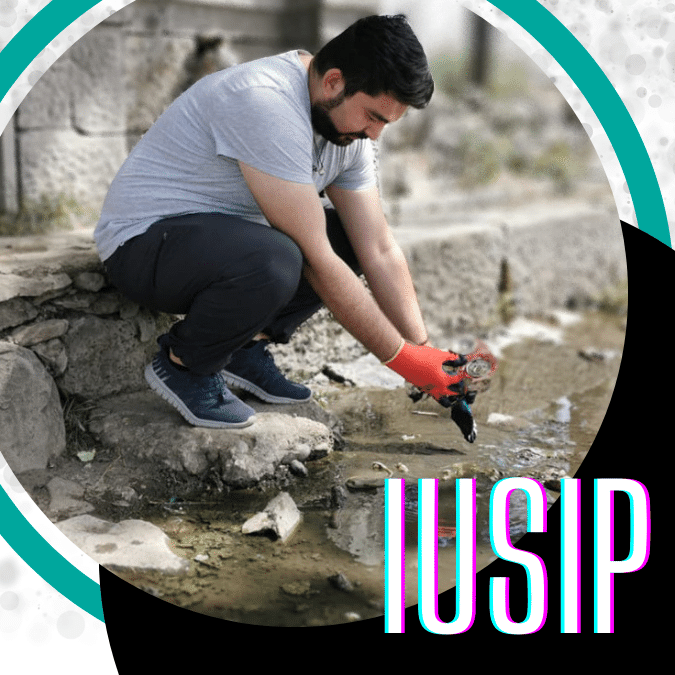
Introducing Iusip | Showcasing the Unheard
Iusip, a 23-year-old from Georgia, is currently studying Management Engineering in Poland. He has been involved in the NGO field for three years, establishing his own NGO at the age of 19. Through his organisation, he provided opportunities and assistance to numerous individuals and facilitated participation in projects in Europe.

Introducing Rimaz | Showcasing the Unheard
Rimaz is a 19-year-old university student from Syria, currently living in Istanbul, Turkey. Rimaz is passionate about environmental issues, particularly the impact of acid rain. She has created a project to educate students on this issue, which involves treating plants with acid rain, sun, and normal rain to demonstrate the effects on plant life. Rimaz believes in the importance of young people being actively engaged in shaping a sustainable future and is motivated by her small efforts contributing to a better future.

Introducing Ia | Showcasing the Unheard
Ia is a young activist from Georgia who is passionate about environmental protection and social justice. For Ia, activism means empowering others and making small contributions to bring about positive change. She aims to engage more diverse groups in her activities and encourages everyone to believe in themselves and their ability to become a positive change-maker.

Introducing Vika | Showcasing the Unheard
Vika Hovsepyan from Yeghvard, Armenia is passionate about creating positive change in her community. She began by initiating a recycling campaign at her school and now is involved in educational projects related to the environment. Her work is motivated by seeing the positive results and the support of others. Vika’s future goal is to collect and recycle clothes to help those in need.

Introducing Iusip | Showcasing the Unheard
Iusip, a 23-year-old from Georgia, is currently studying Management Engineering in Poland. He has been involved in the NGO field for three years, establishing his own NGO at the age of 19. Through his organisation, he provided opportunities and assistance to numerous individuals and facilitated participation in projects in Europe.
Introducing Kacper | Showcasing the Unheard
https://yeenet.eu/wp-content/uploads/2023/10/Kacper.png 675 675 YEE https://yeenet.eu/wp-content/uploads/2018/11/logo-yee-728x1030.png YEE2023-03-05 12:45:072023-10-11 17:02:50Introducing Kacper | Showcasing the UnheardOur mission
 YEE aims to unite environmental youth non-profit organisations in Europe in order to enhance international cooperation, increase knowledge about the climate crisis, raise awareness of environmental problems and to strengthen participation of youth in environmental decision-making.
YEE aims to unite environmental youth non-profit organisations in Europe in order to enhance international cooperation, increase knowledge about the climate crisis, raise awareness of environmental problems and to strengthen participation of youth in environmental decision-making.
Get in touch
Vinohradská 2165/48
120 00 Praha 2 – Vinohrady
Czech Republic
E-mail: yee@yeenet.eu


Financially supported by the European Youth Foundation of the Council of Europe. The views expressed do not necessarily reflect the official position of the Council of Europe









